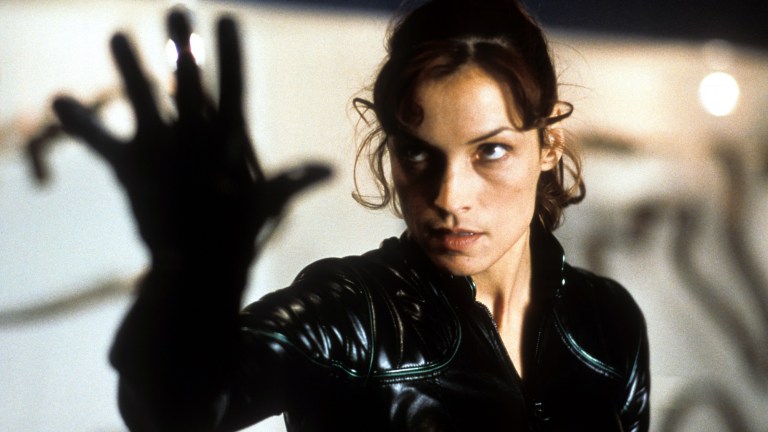X-Men: All The Right And Wrong Lessons Hollywood Took from a Superhero Movie 25 Years Ago
The original X-Men launched the modern era of superhero movies in Hollywood, with all the good and bad that's come out of that.

It was 25 years ago that X-Men truly launched the modern era of the superhero movie. While there had been films before starring Batman and Superman—and even Blade offered proof that obscure Marvel Comics characters could work at the box office—X-Men’s release in 2000 was a game-changer. It helped pave the way for Sam Raimi’s Spider-Man two years later, which in turn opened the floodgates for the rise of both the 20th Century Fox stable of Marvel characters and Disney’s (until recently) all-powerful, unstoppable Marvel Cinematic Universe. Meanwhile Warners continues to take various stabs with their own DC Comics stable to this day.
A quarter century after its release, X-Men remains one of the key entries in the superhero genre for a number of reasons. At the time, it grossed nearly $300 million worldwide against a relatively frugal $75 million budget, which were then eye-popping numbers for a film starring largely little-known actors as relatively little-known comic book characters. Its breakthrough forced studio execs all over Hollywood to recognize the untapped potential of movies based on comics, particularly superhero stories, which they had previously long dismissed.
Hollywood took several good lessons from the success of X-Men to heart, upping the quality and awareness of the genre considerably. Of course Tinseltown being what it is, it also took (and continues to take) some of the wrong lessons from this success. To mark the 25th anniversary of this still important (and still entertaining) film, and with a full-fledged reboot coming from Marvel Studios sometime in the next few years, here’s everything right and wrong that the movie business took from X-Men.
Right: Superman and Batman weren’t the only superheroes in the world
Before the arrival of X-Men, the only major superhero characters to make it to the big screen multiple times were both DC properties, Superman and Batman. Aside from Blade and the disastrous Howard the Duck, no Marvel characters had reached theaters. Even Spider-Man had been mired in developmental hell for years while DC seemed stuck on just recycling its two most popular characters over and over.
While popular with comic fans, the X-Men were relatively unknown to the general public, especially those too old to be watching X-Men: The Animated Series on Fox Kids back in the early ’90s. This made the mutants (and other even deeper cut superheroes) viewed as more of a gamble in risk-averse Hollywood. But X-Men proved that audiences would show up even if the heroes didn’t hail from Krypton or Gotham City.
Wrong: Only one or two characters were really important
While X-Men showed that general audiences would embrace a superhero team, thus laying the groundwork for future cinematic squads like the Fantastic Four and the Avengers, the franchise also made the mistake of heavily focusing on one character—in this case, Hugh Jackman’s Wolverine—to the disadvantage of others.
To be fair, Jackman was the breakout star of X-Men and Wolverine was already hugely popular among comic book readers, but there’s no question, for example, that Cyclops (James Marsden) got shortchanged in not just X-Men, but the rest of the series. The X-Men franchise also kept returning to Magneto as a villain, eventually running an initially compelling dynamic between the complex supervillain/antihero and X-Men leader Charles Xavier into the ground. It’s a mistake that 21st century Superman movies arguably have similarly invoked by always pitting the Man of Steel against Lex Luthor or General Zod, who had both appeared in the first couple of Superman flicks from 1978 and 1980. The Batman franchise also seems unable to ever fully look beyond the Joker.
Right: The characters were the stars
The first blockbuster superhero movie, 1978’s Superman, featured a complete unknown in the title role, surrounded by major American and European stars. The Tim Burton/Joel Schumacher Batman series went for stars galore, casting big names like Michael Keaton and Val Kilmer as the Caped Crusader and putting him up against heavyweights like Jack Nicholson, Michelle Pfeiffer, and Arnold Schwarzenegger.
Although Patrick Stewart was best known for Star Trek: The Next Generation and Halle Berry was already an established Hollywood name, most of the cast of X-Men wasn’t very familiar at all, with Hugh Jackman being a complete unknown. To this day, DC and Marvel movies have often taken the same approach. Did anyone really know who David Corenswet was before James Gunn’s Superman?
Wrong: Let’s take the “comic book” out of comic book movies
The catastrophic box office, audience, and critical response to 1997’s campy, candy-colored Batman and Robin had long-lasting effects on the superhero genre that were still being felt years later. The Batman franchise, of course, pivoted to a darker, grittier version of the character that was appropriate for the property, but some of those same strategies were applied to the X-Men and some of the other developing Marvel movies.
The most notable, of course, was jettisoning the X-Men costumes from the comics, including Wolverine’s “yellow spandex,” in favor of an all-black leather look. While some 2000s comic book movies like Spider-Man and Fantastic Four, retained a colorful aesthetic, X-Men went for something more muted. Coming out in 2000, one year after the massive success of The Matrix, the latter film’s costume designs clearly had an impact as well.
Beyond that, X-Men: The Last Stand altered the “Dark Phoenix” storyline to make it less cosmic and more rooted in Jean Grey’s psychology. In similar fashion, Sam Raimi’s Spider-Man movies altered the Green Goblin’s look in favor of high-tech green armor, Bullseye and Daredevil’s costumes in Daredevil were redesigned (or entirely absent in Bullseye’s case), and Fantastic Four: Rise of the Silver Surfer swapped out a giant, helmeted purple Galactus for a cloud and turned Doctor Doom into an uninspired Norman Osborn knockoff. It wasn’t really until the 2010s that the MCU made it acceptable to fully embrace even the weirdest aspects of comics.
Right: These movies can be about something
The first truly successful superhero movies, Richard Donner’s Superman and Tim Burton’s Batman, explored conflicts inherent in the characters but were essentially escapist, high-concept entertainments. Like the comics it was based on, X-Men was something different. To begin with, the film opened in a Nazi concentration camp, the last thing anyone not in the know might have expected from a comic book movie.
Director Bryan Singer and actor Ian McKellen also both realized that the struggle of mutants to find a place in human society was a powerful metaphor for the ostracization and alienation endured by the LGBTQ+ community, a more specific reading of Stan Lee and Jack Kirby’s more general analogy of mutants as “outsiders.” This was heightened in X2 in 2003 when during the height of homophobic fear-mongering from the Bush White House, a mutant teenager is asked by his mother if he’s “tried not being a mutant?” (We need to note that Singer’s shepherding of X-Men to the screen has since been marred by the many later reports of his disreputable behavior.)
Those themes remain, sadly, all too relevant today, and also hit surprisingly hard when X-Men first came out. The film’s impact reverberated through future superhero movies, which focused on topics like the surveillance state (The Dark Knight), the one percent vs. the working classes (The Dark Knight Rises), the ethics of building high-tech weaponry (Iron Man), the responsibility of wielding great power (Spider-Man), the morality of the intelligence apparatus (Captain America: The Winter Soldier), and the legacy of African diaspora (Black Panther), just to name a few.
Wrong: It’s all about the spectacle
With its large cast of characters, potent themes, and fantastical premise, X-Men remains a fairly low-key, almost quaint movie. The visual effects pale into comparison to what’s available now, and a surprisingly large chunk of the film’s running time is given over to dialogue and character moments. There are really only three major action sequences, and they too pale in comparison to some of the apocalyptic sequences we’ve seen in the past two decades (the ending in particular has never knocked anyone’s socks off).
X-Men was working with a budget back then of $75 million, chump change next to the $250-300 million behemoths that have been unleashed on a regular basis since the early 2010s. As the budgets rose, and the spectacle upped the ante over previous films, the focus on character and story grew less important. While X-Men is certainly a flawed film in a number of ways, it was small enough to direct its resources toward building the world of the X-Men, and the characters who reside in it, rather than destroying whole cities or opening up interdimensional rifts.
Those have their place (and can still be fun if done right and not overused), but no one is going to care how many cities you wreck or universes you explore unless you care about the people involved. With X-Men, the public came to care about the plight of Professor X, Jean Grey, Rogue, Cyclops, and, of course, Wolverine. And that may be the movie’s most enduring legacy.
